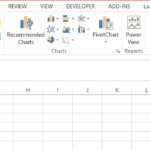Calculating Derivatives in Excel
Calculating derivatives in Excel can be a useful technique for analyzing changes in data trends, especially for financial, engineering, or scientific data. Excel does not have a built-in function specifically for calculating derivatives, but you can approximate derivatives using a few different methods. Here’s how you can calculate derivatives in Excel:
Method 1: Forward Difference Approximation
This method calculates the derivative at a point using the difference between it and a subsequent point.
Steps:
1. Input Your Data: Enter your values in two columns: one for x (independent variable) and one for y (dependent variable).
2. Calculate the Difference:
- In a new column, calculate the difference in y values (Δy) and the difference in x values (Δx). Assume y values are in column B and x values are in column A.
- In cell C2, for example, to calculate the difference between two points, use: =(B3-B2)/(A3-A2).
- Drag this formula down to apply it to all data points.
3. Interpret the Result: The values in column C represent the approximate derivative of y with respect to x at each point.
Method 2: Central Difference Approximation
This method provides a better approximation by using the average rate of change between the points before and after the point of interest.
Steps:
1. Input Your Data: As with the first method, enter your x and y values in two columns.
2. Calculate the Central Difference:
- In a new column (say C), calculate the central difference. For cell C3, the formula would be: =(B4-B2)/(A4-A2).
- This formula calculates the derivative at the second point using the average rate of change between the first and third points.
- Repeat for each point where possible. Note that you won’t be able to calculate this for the first and last points using this method.
Method 3: Using Excel’s SLOPE Function
For linear data sets, you can use Excel’s SLOPE function to calculate the derivative.
Steps:
1. Input Your Data: Place your x and y values in two columns.
2. Use the SLOPE Function:
- Select a cell where you want to display the slope (derivative).
- Use the formula: =SLOPE(B2:Bn, A2:An), replacing B2:Bn with the range of your y values and A2:An with the range of your x values.
- This function returns the slope of the linear regression line through the data points in specified x and y ranges, essentially providing the derivative for linear relationships.



